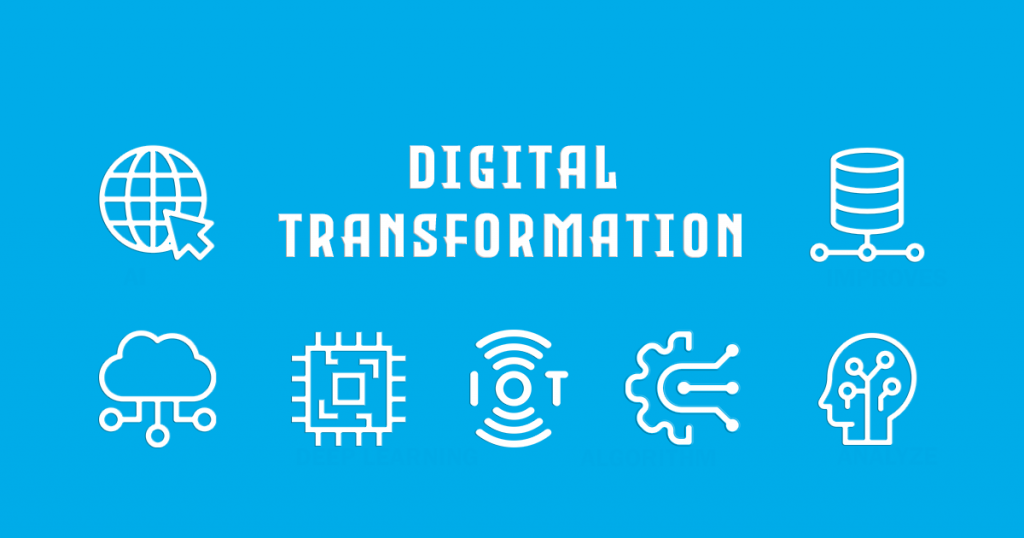The world is at a tipping point now, on the edge between the old way of doing things, and the new, exciting, and scary possibilities of the beckoning future that have started a revolution. This is a re-invention of how business is done, a digital transformation.
All organizations face a choice. They can continue to do what they used to, maintain traditional ways of working in a place in the spirit of keeping alive a past that has worked for them, or learn to rebuild themselves, shed their obsolete skin, and grow into a new persona that is ready to take on the challenges of the current and future world.
Deloitte estimates that new technologies and end-to-end modernization reduce bureaucracy substantially, or even eliminate it in some cases. They increase IT productivity by around 30%, massively decrease defects in products and applications, and speed up the release of new products by about 50%. A streamlined environment and cutting-edge technology have a very positive effect on productivity as well, increasing it by around 40%.
Yet, having to completely re-model a business vision, that has worked for decades, in some cases, is an ambitious and fraught process. Yet one that is necessary. To be able to hold on to stability, companies must learn flexibility and fluidity. They must let go of the walls and the rules that kept them going until this point in order to create a much-improved version of themselves through the tools of the world that is coming into being as we speak.
Digital transformation is not an easy straightforward process and it will be different for every company. Yet, having a modicum of direction is for sure helpful. It provides companies with the seed of thought that will further develop into a full-fledged plan.
What is digital transformation?
First of all, it is a complete change of mindset. It is a letting go of old narratives and an embracing of different ways of doing things. It means reengineering a business to fit the speed of the present and its methods.
Older procedures are liniar or top-to-bottom, focusing on the decision-making that happens at high levels and is then sent down to the bottom through multiple layers. This takes time, it can get delayed or even stuck. In a fast-moving world, it is less than ideal.
In more efficient, newer models systemic thinking takes center stage, information is not siloed into separate departments and hard to reach, but teams are multidisciplinary and integrated, communication happens organically and on time not according to artificial schedules. The business uses technology pervasively.
Different kinds of digital transformation
This type of metamorphosis can happen at different levels and scales. Each company decides how much to change and how slow or fast, depending on the vision of the business owner, the resources, and the necessities of the market.
Limited to workflows
Digital transformation can be purely focused on processes that need to be reimagined to fit other markets, channels of distribution, or to reach a wider public. In this case, newer technologies innovate the workflow and the change is finite, limited to certain parts of the company. The tools available are data analytics, APIs, machine learning, and, of course, agile procedures. These are among the most known approaches used to revamp the way certain parts of a business function.
Inside out
When the change happens from the inside out, the whole business model suffers transformations and targets the building blocks of the organization. The way it creates value morphs. In many situations, these companies reinvent something that still functions in a traditional way and is active in parallel. As an example, Airbnb and regular hotels come to mind. Both systems continue to exist, but the appearance of the former disrupts the way business was done before and changes how customers react and what they expect.
New frontiers
When an organization has the force, which is the financial and human resources to invest, digital transformation might mean to become an intermediary or to offer services and products that were not the main focus before. For example, Amazon, already an intermediary between businesses and companies, has stepped into the digital world through Amazon Web Services. Offering this to other companies is a business in itself and has increased the market power of the initial organization. Not to mention that it has placed them at a sweet spot as enablers of digital transformation for other businesses that are yet to take the plunge. They are using technology to create new revenue streams.
Improved mindset
Another way to do a digital transformation is to change the way the whole company approaches a project. The traditional top-down decision-making procedure does not work anymore.
It introduces trial and error as the method of choice for coming out with the right service, or product. This aligns the organization with the modern world of business. Testing and learning with each new iteration should be the goal. They rethink the work environment as a place of collaboration where everyone is in the loop and participates in real time.
Principles for a successful digital transformation
A good plan
A thorough analysis of the company should provide enough knowledge about what must change, in what way, but most of all why. Starting a digital transformation haphazardly is not going to be beneficial in the long run. Such a huge reordering is not unlike a crisis. The better the company learns to deal with it the easier other similar situations will be on everyone.
A transformation of this type means that business processes, management practices, the way the company gets its information and uses it, the nature of internal relationships, the communication with its customers will all be different. The role of technology is that of a bridge that connects your organization in an expanding network of similar ones.
Remember to make sure you have an overview of all the processes that are too slow, require too many steps, are constantly clogged by the need to get approvals, and go back towards what you want them to do. This reverse engineering has better chances of giving you the desired result.
Any new technologies you implement have to be intuitive and easy to use. They also have to be available company-wide. All systems that you put in place should allow non-technical members of the company to have access to and interact with the data. Processes that were siloed in the traditional arrangement have to blend together in new ways.
Use feedback, from your teams and your customers to find out if what you are doing is going in the right direction. Constantly test ideas. This is the only way to arrive at a product or service that is truly outstanding.
Learn how to measure success so you can test and improve the new methods, capabilities, processes, and teams you have created.
Leadership
Compliance and performance models are not ideal in today’s world anymore. So, leadership needs to change first of all. People at the top have to be the visionaries who embrace experimentation, new ways of thinking, and who learn to pass this knowledge to their employees. They are the ones who can make other people envision a future of collaboration and enable it through their example and determination for change. What a team transitioning to a new order needs is the support that is constant and enthusiastic and shows that this phase is a common effort. Also, it is crucial to make your team or company understand exactly what is happening because when they know what the story of the reinvented business is, they will be more willing to accept and work through the transition phase.
As a consequence, the culture of the company needs to change from one where fear of failure is at the top, to one where failure is an opportunity to improve. Flexibility is the key in a very connected environment and learning to adapt makes both the team and the company more resilient.
The manager does not direct the team anymore, but enables good communication and has an overview of the project. This allows him to intervene in case of blockages and communication problems. He takes care of all the tasks that are not the direct attribute of the other members. His job is to act as an intermediary more than anything and the person who needs to make sure the team has everything it needs to deliver.
Conclusion
A digital transformation does not need to happen all at once. For certain organizations that would be an impossible burden. This means you need to start slow with the areas that require attention, and then take every opportunity to look at processes that are lagging, or use outdated thinking and reconfigure them into effective ones with the use of technology.

